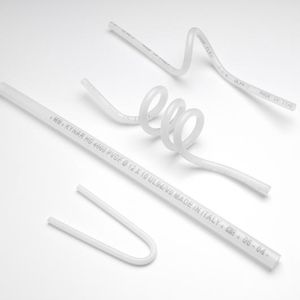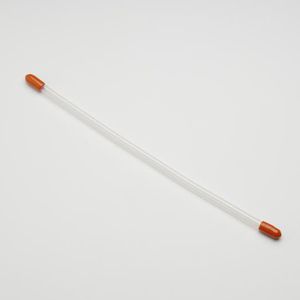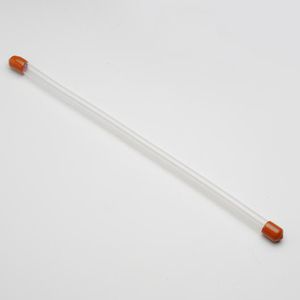
- Hydraulics - Pneumatics
- Pipe, Tube and Fitting
- Fuel hose
- MEBRA PLASTIK ITALIA SPA
Fuel hose thermoplasticPTFEfor vacuum

Add to favorites
Compare this product
Characteristics
- Use
- for fuel
- Material
- thermoplastic, PTFE
- Applications
- for vacuum, for thermal insulation
- Other characteristics
- chemical-resistant, UV-resistant, hydrolysis-resistant
- Inner diameter
Max.: 15 mm
(0.591 in)Min.: 1.6 mm
(0.063 in)- Outer diameter
Max.: 18 mm
(0.709 in)Min.: 3.17 mm
(0.125 in)- Pressure
Max.: 20 bar
(290.075 psi)Min.: 4 bar
(58.015 psi)- Temperature
Max.: 260 °C
(500 °F)Min.: -60 °C
(-76 °F)
Description
FEATURES
PTFE is the most chemically resistant plastic known with only a few chemicals that will react with it. It has excellent thermal and electrical insulation properties and a low coefficient of friction. PTFE has almost ideal dielectric properties. Its dielectric constant (2.1) and power-loss factor (0.0002) are low and remain so over a wide range of temperatures and frequencies. In certain applications, such as fuel hoses, some electrical conductivity is required to dissipate static charges. When exposed to flame, PTFE decomposes leaving just a little residue. PTFE is extremely inert and stable up to a temperature of 260 ° C. Take the flame away and PTFE goes out. PTFE is also virtually unaffected by oxygen, ozone and UV light. Since the PTFE is not melt processable, it must be compressed and then sintered to become a useful plastic. PTFE, though a thermoplastic, has a viscosity at its melt temperature so high it cannot be processed by conventional extruding or molding techniques.
TEMPERATURE
Products of the series PTFE can be used in a temperature range from -60°C to 260°C.
APPLICATIONS
Industrial automation; Vacuum equipment; Lubrication; Machine tool; Robotics; Powdered paint; High temp above 100; Low temp below 10; Chemical resistance; Low permeability; Pest control lines; Hydrolysis resistance;
Catalogs
No catalogs are available for this product.
See all of MEBRA PLASTIK ITALIA SPA‘s catalogsRelated Searches
- Piping
- Polymer hose
- Structure hose
- Flexible flexible piping
- Abrasion-resistant hose
- Reinforced hose
- Chemical product flexible piping
- PU hose
- Air flexible piping
- Standard hose
- Lightweight flexible piping
- Pneumatic hose
- Chemistry hose
- Spiral hose
- UV-resistant hose
- Polyester hose
- Anti-static flexible piping
- Fuel hose
- High-temperature flexible piping
- Heat-resistant flexible piping
*Prices are pre-tax. They exclude delivery charges and customs duties and do not include additional charges for installation or activation options. Prices are indicative only and may vary by country, with changes to the cost of raw materials and exchange rates.





